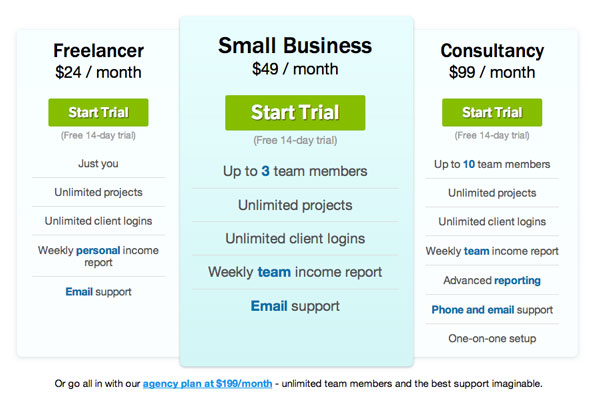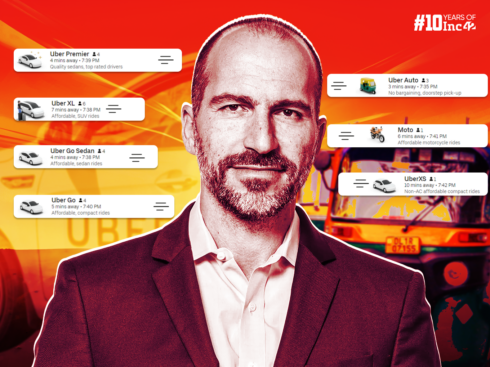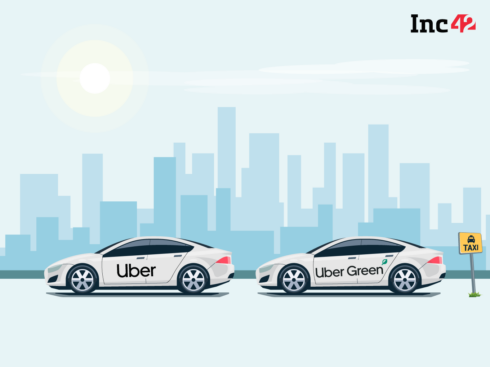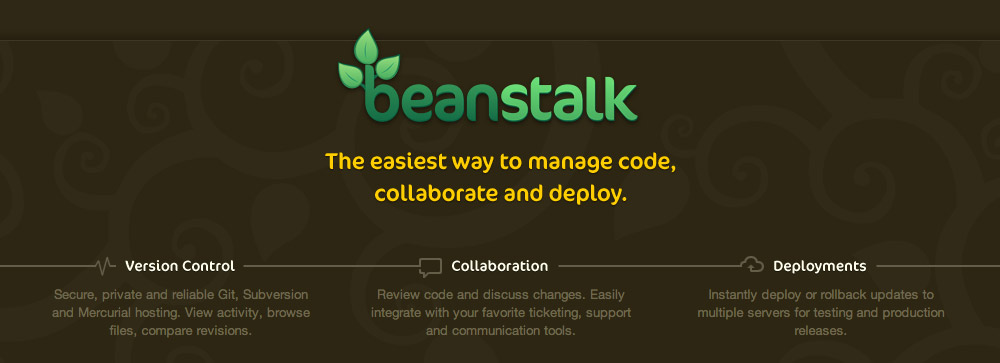
There are ways that your software as a service web application can make more money today. They aren’t complicated or revolutionary, but instead are practical ideas that you should consider implementing right now.
Raise your Prices:
Sounds obvious, right? But raising your prices is the easiest way to make more money and increase your profit. So many web applications have pricing plans that start as low as $9 or $12 a month, which, if you are selling to businesses, is far too low. By the way, you should be selling to businesses.
Once someone in the company has got an approval to purchase your product it doesn’t really matter what the price is, so long it is small enough that it doesn’t need a specific line item in the budget.
“…almost every start-up I have ever seen has set its prices too low. Founders usually imagine that they are selling their wares to people more or less like themselves–which is to say, smart, discriminating consumers. But they would do well to remember that there is a stark difference between selling to consumers and selling to businesses. And if you ask me, all things being equal, start-ups should almost always opt to sell to other businesses.” – Joel Spolsky, Fog Creek Software
With one of my previous software companies customers were paying $300 a month to use the software. It was cheap compared to their other business expenses. Since the application saved them a ton of time, they were happy to pay it.
Planscope used to have cheaper plans, but now $24/month is the base price.
Low prices cause problems
Not only will raising your prices generate more revenue, but higher prices will also get you a higher quality customer. When I did freelance web design I gradually worked my way up from designing $500 and $1,000 websites to $5,000-$10,000 projects (I was in college at the time). I found that the higher-priced projects were less work, not because there was less design and development, in fact there was more, but because the customers were more professional and so much easier to deal with.
The customers not willing or able to pay more than $1,000 for a website would also continue to argue over costs throughout the project. They would do everything possible to fight costs associated with change orders, and try to get things for free. Worst of all, they needed the most hand holding and were the slowest to pay.
On the other hand, the customers that paid more for larger projects were professional, valued my time, and paid their invoices on time. So not only was I making more money, but I was working with people who made me happier.
In a SaaS company one of your biggest costs from each new customer is support time. In general, higher paying customers need less hand holding and ask fewer support questions. You may find that by dropping your $10/month plan, your support costs will decrease.
Offer Multiple Packages:
Even if you sell your product for a higher price, you are still missing out on potential revenue. When pricing my book, The App Design Handbook, I decided to price based on value ($39) rather than based on the market rate for eBooks ($12). I thought that was the end of my work on pricing, until some smart friends convinced me to offer multiple packages.
By offering several higher-priced packages (that deliver considerably more value) I am allowing potential customers to pay the price that the book and training is worth to them. If they are just a hobbyist they can pick up the book, which is really valuable, for $39. A more serious developer may pick up the middle package, which includes PSDs and video tutorials, for $79. But someone buying for their software development team may buy the highest package (which includes a multi-user license and sample projects).
The higher-priced packages don’t price people out of buying the product; after all, they can still purchase the $39 option, but for those that do pay more, it makes for a huge increase in revenue. Let’s look at the breakdown of sales through my site as of November 4th, 2012 (2 months of sales):
- The Book ($39) – 226 copies sold
- The Book + Videos ($79) – 137 copies sold
- The Complete Package ($169) – 100 copies sold
As expected, the cheapest package sold the most, with the other packages selling incrementally less. Actually, what surprised me is how close the two higher packages are in terms of number of sales (137 and 100). I expected the middle package to sell more and the higher package to sell less.

What gets more interesting is when you look at revenue from each package:
- The Book ($39) – $7,354
- The Book + Videos ($79) – $8,923
- The Complete Package ($169) – $14,420
Note: these numbers aren’t perfect since I had a launch day sale. So don’t try to multiply copies sold by the current price to get the total. That won’t add up.
That shows an insane difference. Despite selling far fewer copies, the most expensive package made almost as much money as the other two combined.
There is a lot more analysis we could do on these numbers, but the point I want to make is just how much of a difference offering multiple packages made. When you break down the numbers, offering multiple packages increased my revenue by 200%. All this without a loss in number of sales.
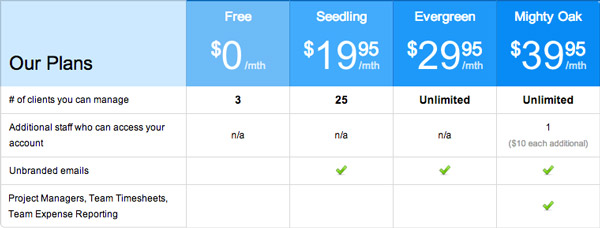
Rename your Pricing Plans:
First of all, pricing plans should have names. Whether you use something like “Small, Medium, Large” or “Silver, Gold, and Platinum” those names are better than nothing. But you can take your names a step further by using package names to help your customers decide which is most appropriate for them.
Patrick worked for a large company in Japan, and they needed the tracking software Crazy Egg for a project. Patrick ran the numbers and wrote up a purchase request for the Crazy Egg Hobbyist plan, which would cost the company $9 a month.
When Patrick’s boss reviewed the form, he quickly pulled up the Crazy Egg pricing page. After scanning the prices he grabbed a pen and crossed out “Hobbyist” and wrote in “Enterprise.” Then, he changed $9 a month to $500 a month and handed it back to Patrick for his sign off on the changes.
Patrick quickly said “Wait boss, we only need the $9 a month plan!” to which his boss responded, “F*** if I’m going to show my boss any paper that has ‘hobbyist’ written on it.”
As Patrick said, ”He was willing to pay $490 a month extra, just to avoid two seconds of social awkwardness with his boss.”
So you want to name your pricing plans in a way that will help your customers segment themselves to a pricing plan without having to get into the details of specific numbers.
In Patrick’s story, as with many business purchases, the buyer isn’t spending their own money so the price doesn’t matter nearly as much. For those that are spending their hard-earned cash, you have lower priced packages, named Hobbyist or Freelancer, that fit their needs.
Send out an upgrade email
If you have a lot of customers, chances are many of them are nearing the limit of their plans. You can send everyone who is close to the limit an email reminding them to upgrade. Here is one I received the other day from Beanstalk, who I use to host SVN and Git repositories:
Hi Nathan,
We ran some numbers today and saw that your Beanstalk account ([Account Name]), where your team stores your source code and collaborates, has reached its limit of users.
Most of our customers want to have lots of headroom so that their work never gets interrupted and the ability to collaborate with all team members, customers and stakeholders.
Right now you pay $15 a month for the Bronze plan. The next plan is the Silver plan, which is $25 a month.
Here is what upgrading to Silver will get you:
Storage: You use 1.1 GB of 3 GB -> the Silver plan has 6 GB
Users: You use 5 of 5 allowed users -> the Silver plan has 20 users (15 more people to work with!)
Repositories: You have 10 of 10 repos -> the Silver plan has 25 repos
We wanted to make upgrading today an easy decision, considering how valuable your team’s time is. To make it a total no-brainer, if you upgrade through this email, we’ll give you the first month of your Silver account at your current billing rate. You’ll get billed the standard rates starting your second month.
Click this link to upgrade to Silver. You’ll be able to add new users right away, but won’t get billed at the higher rate for 45 days!
[Upgrade Link]
The discount is only good until Monday, November 5th, so if you’re planning to invite more users, you should act quickly.
If you’d rather not upgrade right now, no problem. You should probably keep an eye on your limits going forward. You can always change plans at any time through your billing screen in your account.
Any questions? Reply to this email — I love talking to our customers.
Natalie
Co-founder, Wildbit
No one wants to hit their user or repository limit right when they need to get something done. Imagine needing to set up a repository for a new project due next week, only to find out that you have reached your limit. We usually think that upgrading is as easy as clicking the upgrade button, but for many companies it requires filling out a new purchase request and getting approval. So the offer to upgrade, at a discount, before the new space is needed, could be very compelling.
I heard that this email was very successful. Hopefully Wildbit will release specific numbers, but I bet it got a lot of people to upgrade who had been putting it off.
Reframe the Discussion
A very common mistake made on pricing pages is to assume that the visitor has already made a decision to buy and now just needs to decide which package is the right fit. The truth is that most people are still making a decision, and you still need to sell the benefits of your software. Even on the pricing page.
For those of you who already offer multiple packages, how do you display the packages? If you are like most companies you use a multi-column layout, with each package side-by-side, starting with the cheapest package on the left and going to the most expensive on the right. If most of your customers read left to right, this tells your customers they should start with the cheapest package and only upgrade if they need the extra features.
What if, instead, you recommend a plan as the default for customers. Not the cheapest plan, but the plan you think is a good fit for most of the customers and a good money maker for you. Let’s say your middle plan around $100 a month. Sell people on the idea of that plan, how you think it is the best plan for the majority of your customers, and how it is likely the best plan for them. Remember that you are still selling them on the benefits of the software, not just comparing plans.
This is what marketers are trying to do when they highlight one of the plans with a white box, or otherwise make it more prominent. Same idea, just make your recommendation even stronger.
Then after you sell the benefits in your recommended plan you can mention the other smaller and larger plans. Hopefully your visitors now think the recommended plan should be their default, and they should only switch to another plan if they have a reason to, unlike before, where the cheapest plan was the default.
Most importantly you should A/B test this change to see which version generates the most profit. Don’t just blindly implement advice without testing it. What works for one product won’t always work for another.
Contact Customers with Invalid Billing Information
One thing that surprises many first-time owners of a SaaS business is how often credit card charges fail. So, how you handle those failed charges, often due to expired cards, can have a huge impact on your bottom line.
The guys at LessAccounting hired someone to call all their customers who had invalid billing information. They had 400 businesses with invalid billing information, so that was $12,000 a month in lost revenue, all from people who still want to use the software, but need a small reminder to take the time to update outdated information.
After a few months of following up they had regained 180 customers for about $5,400 per month. That adds up to quite a bit over a year and was well worth their time. You can read their detailed write-up here.
Implementing the ideas
As I mentioned earlier, you should pick and choose what you implement, and test everything. But I think you’ll find great results from just a few of these changes.







